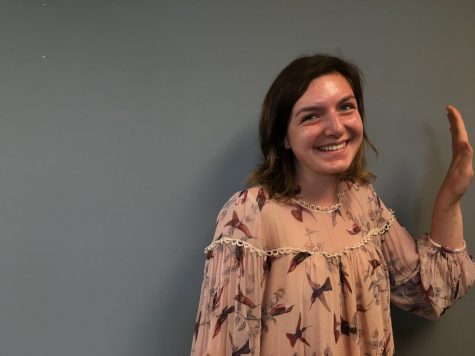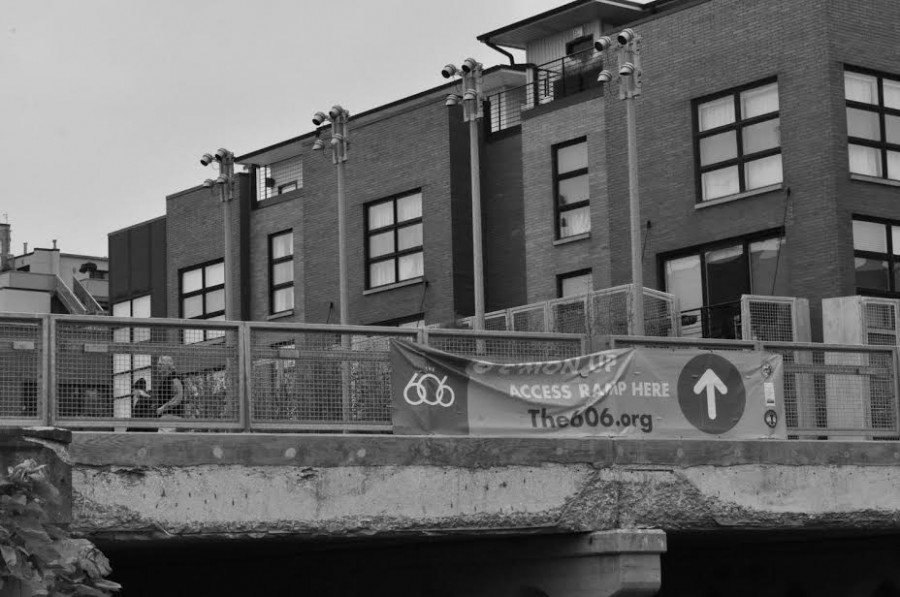The 606
Chicago’s New Attraction Draws Neighborhoods Together
Photo credit: Camryn Oliff
Chicago has adopted some of New York’s sightseeing experiences.
On a recent sunny Saturday morning the 606 trail is bustling with groups of people. Parents ride bikes with their children, joggers dart around in chatting groups, roller skaters skirt in and out of the crowds. People of all ages walk the trail — infants, toddlers, high schoolers to grandparents all use the 606 in their very own ways.
Following the 1871 Chicago Fire, the set of railroad tracks that is now the 606 trail was built along Bloomingdale Avenue as a way to draw all parts of the city together. Years later the tracks were abandoned. In 2011 the city made plans to remodel the tracks into a user friendly walking trail. In June, the Bloomingdale Trail, more commonly known as “The 606,” opened to the public.
The 606 runs all the way from Walsh Park on Ashland Avenue to the Ridgeway Trailhead on Ridgeway Avenue. In other words, the 606 runs through six main neighborhoods including Bucktown, Wicker Park, Logan Square, Humboldt Park, and Lawndale. Because the 606 runs through so many neighborhoods all with 606 zip codes, the trail name was created.
Jermaine, a resident in Logan Square, uses the 606 twice a day downtown on his commute to work. “I used to live close to Wrigley Field, and I would take the lake path, and that was nice ‘cause there was no traffic, and it felt very safe.’” Jermaine said. “That is still something I enjoy about my commute now.”
Within the last few years, neighborhoods that surround the 606 have begun to grow in popularity, which means the prices are rising. “I wanted to move to Wicker Park-Bucktown, but I got priced out of Wicker Park because if feels like the new Lincoln Park,” Jermaine said. “So I did Logan Square because it’s close to the blue line.”
Jaina, a resident of Old Town, was visiting The 606 for her first time to see the opening of a mural.
“I don’t live anywhere near here, so this was my first experience today, but I think it’s lovely,” Jaina said. “I will definitely come back. It has so many different things — it has green space, it has a place to sit, and it also has art that beautifies the space.”
Talia Garg, a sophomore at Parker, uses the 606 about once every month. “I like how there’s so many entrances, whenever you exit, there’s just going to be food,” Garg said. “One time I started near Bang Bang Pie and Biscuits and I ended near [Bucktown] and I had no idea how far I’d gone.” The 606 is a total of 2.7 miles from start to finish.
Living in Lincoln Park, Garg feels she’s been exposed to new neighborhoods in Chicago. “Sometimes I wander off, and I don’t know where I am, Garg said. “It’s fun!”
In the future Garg would like to see additions made to the sides of the trail. “Have stopping points along the bridge,” Garg said. “Yes, it’s nice, and yes, it’s pretty, but I would like, say, an ice cream stand on the side.”
Emily Powers, upper school math teacher, has also visited the 606. “I’ve only used it once,” Powers said. “I went purposefully to go explore it during the summer. It was nice. We went right when it first opened, so they were still doing a lot of the landscaping, and it was really busy, but I thought it was really beautiful.”
While Powers had been to neighborhoods along the 606 before, she used the trail as a new way to bike to different neighborhoods. “Actually we did take an opportunity to bike down to Humboldt Park, Powers said. “I bike around the city a lot and commuting over there, it’s hard to find the best bike trail, so we used it to get to Humboldt Park.”
Bill, visiting from Phoenix, Arizona, compared The 606 to the similarly designed Highline walkway in New York City. “This is 10 times better,” Bill said. “I think part of it is that this goes through more residential, and the Highline goes through more warehouses and factories — that’s not as well-designed. But The 606 blows it away.”








